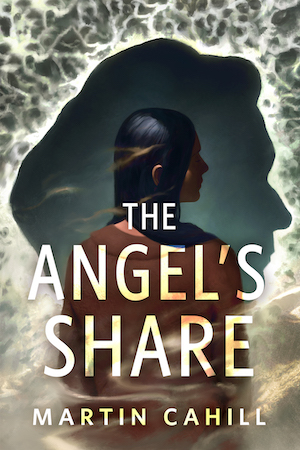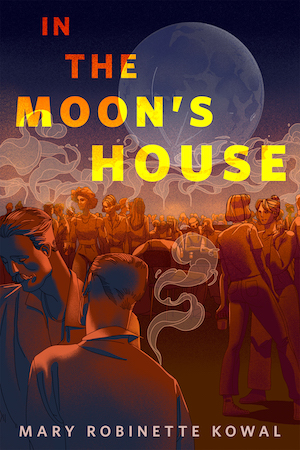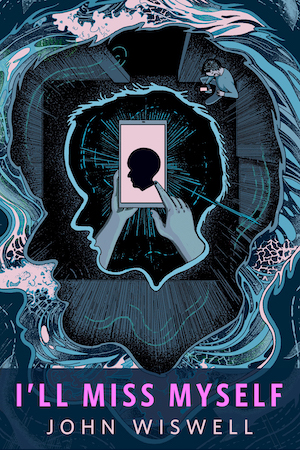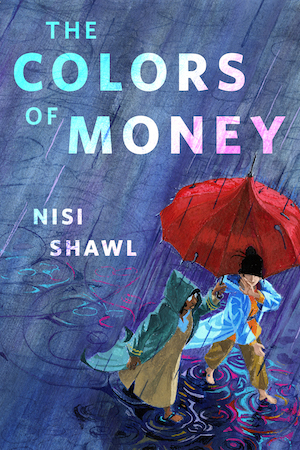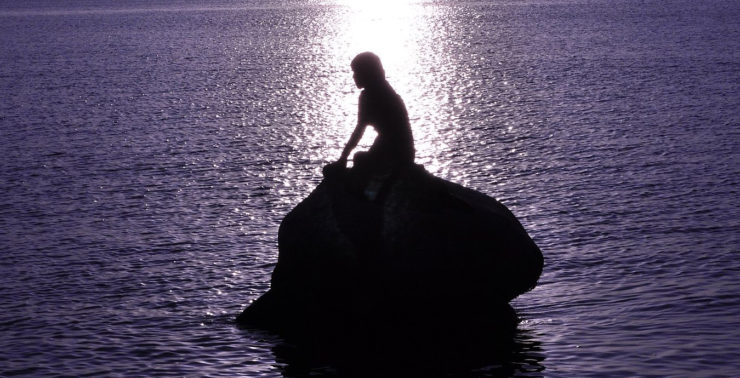“As far as I knew, mermaids were white.” This was a response to one of my posts on Twitter this year.
At first, I was indignant. A quick scan of their account showed their bigoted views, but I still wondered: is racism the only reason they would think this?
I remember the outrage when Halle Bailey was cast as Ariel in the upcoming remake of Disney’s The Little Mermaid, and the sinking feeling I had, knowing the comments that would inevitably follow. I had just finished writing Skin of the Sea a year earlier, and all I could think was, if people are outraged at one Black mermaid…wait until they hear about this book.
But perhaps it’s not just a case of racism—perhaps it’s also down to the mermaids we’ve all seen in stories and films. You know the ones—ethereal with red or blond hair and pale creamy skin. These are the mermaids we are used to.
I loved The Little Mermaid by Hans Christian Andersen, and I constantly sloshed about in the bath at home, imagining swimming beneath a jewel-blue sea, playing with dolphins and admiring my iridescent tail. But despite fully envisioning spinning in the deep, there were moments when I did doubt myself. Could I be a mermaid if my hair wasn’t long and blond? Where were the mermaids who looked like me?
Mermaids, like other mythological creatures, have roots in many cultures, including the Ningyo of Japan, the Yawkyawk of Australia, La Sirene of Haiti, Iara of Brazil, and Sedna of North America. Their existence is woven throughout the world, but not nearly enough of their stories have been widely told.
Buy the Book
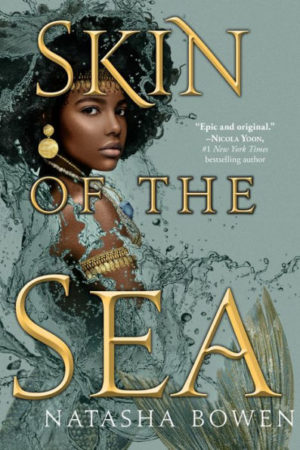

Skin of the Sea
Years later, when I wanted to write a story involving magic and the sea, the only story in my mind was one of Black mermaids. In writing Skin of the Sea, I focused on West Africa, spurred by my Nigerian heritage. Discovering mermaids with African origins led me to stories and beliefs that are brimming with magic and history.
Learning more during my research, I was in awe of the fact that mermaid-like beings in Africa can be traced back through ancient history. Take the Dogon people of Mali. In their creation story, over 4,000 years ago, they speak of the Nommo, amphibious beings who came from the sky and created the first waters on earth. They made their home in these bodies of water, and according to the Dogon, the Nommo became their guardians, teaching them about stars and planets. There is evidence to suggest that the Dogon knew of the Sirius B star (which can’t be seen with the naked eye) and its rotation habits centuries before European astronomers.
Mermaids are often portrayed as creators and protectors but they are also known for being fierce and dangerous. Other mermaids with African origins range from the Mondao in Zimbabwe, who have sharp teeth and pull people into deep water, to the Karoo mermaid in South Africa, who is said to live in a rare waterfall in the desert, creating storms and floods if she’s angered.
My obsession grew when I focused on West Africa and Mami Wata. Most describe her as half-woman, half-fish, but some say her bottom half is made up of the coils of a snake. Mami Wata is not just a mermaid or water spirit used to scare children away from deep water, but an entity whose existence is believed by some to go back to ancient times. Even the moniker “Mami Wata” is believed to have been used in the Ethiopian Coptic language, with “mama” representing truth, knowledge, and wisdom, and “uat-ur” meaning ocean water.
When exploring beliefs of Mami Wata, I came across Yemoja, who is presented as half-woman, half-fish. The name Yemoja means “mother whose children are the fish.” She is a powerful and celebrated orisa, a Yoruba deity of the Ifá spiritual belief system. Due to the transatlantic slave trade, beliefs and stories of Yemoja have spread across the diaspora, and she’s known by a variety of names, including Yemaya, Yemanja, Iemajá, and more.
It is believed that Yemoja left her home in the river Ogun and followed the first enslaved. Some say she accompanied them to offer comfort on their journey, others claim she wrecked the slave ships, and some say that she returned the souls of those who passed in the water, returning them home. The gathering of souls is what sparked Skin of the Sea. I wondered: What if Yemoja created seven of her own Mami Wata to do this? What if they were bound to only bless souls, but one of them did more and saved a boy? The plot began to form in my mind.
Yemoja is one of many orisas worshiped in the Ifá spiritual belief system and across the diaspora, in religions such as Santeria. When some of the enslaved Africans had Catholicism forced on them, they aligned a different orisa with each saint, keeping their beliefs alive and spreading Yoruba orisas across the world. I dug deeper into this, and when I spoke to a Nigerian priest with extensive knowledge of Ifá, the pantheon of orisas unfurled itself to me. With powers such as controlling thunder and lightning, being able to fly, and transforming themselves, Esu, Sango, Oya, and Ogun are just a few of these deified personalities with importance.
Reading and learning more about other African myths, I was sucked into a world of legendary and magical creatures. Among them were the bultungin of the Kanem-Bornu Empire, people who can shapeshift into hyenas, and yumboes, which are Senegalese fairies. Knee-height with silver hair, yumboes come out to dance under the moonlight and feast on corn and fish. They have servants whose only visible parts are their hands and feet, and they are said to live just off the coast of Dakar.
The African version of a unicorn also plays an important part in Skin of the Sea. Known as the Abada from the Congo, the creature resembles a donkey and has not one horn but two, with a short coarse tail. The horns have magical properties, said to heal anything from poison to disease.
Balancing the yumboes and the Abada are creatures of nightmares: the Ninki Nanka and sasabonsam. Again, stories of the Ninki Nanka vary, but most speak of a dragon-like creature with fur and horns that lives in swamps and rivers. The monster is said to be extremely dangerous, seizing those who are foolish enough to come close to its domain and drowning them. Another horror is the sasabonsam: creatures with iron teeth that live in the canopies of forests. The sasabonsam sometimes play with their prey before using giant talons to snatch the person up, drain their blood, and eat them.
Once I started researching and shaping this story, I didn’t stop at Black mermaids. I couldn’t. All of these revered Black deities and African mythical creatures made their way into Skin of the Sea. They created a historical young adult tale that weaves fables, spiritual beliefs, and legends. It’s a novel that tells a different story, but with creatures similar to those loved and shared in Eurocentric books, films, and TV—a story that explores the Black fantastical with African origins.
After all, Black people can be magic, too.
Black people can be mermaids, fairies, gods, and goddesses.
Black people can be all that and more.
Natasha Bowen is a writer, a teacher, and a mother of three children. She is of Nigerian and Welsh descent and lives in Cambridge, England, where she grew up. Natasha studied English and creative writing at Bath Spa University before moving to East London, where she taught for nearly ten years. Her debut book Skin of the Sea was inspired by her passion for mermaids and African history. She is obsessed with Japanese and German stationery and spends stupid amounts on notebooks, which she then features on her secret Instagram. When she’s not writing, she’s reading, watched over carefully by Milk and Honey, her cat and dog.


